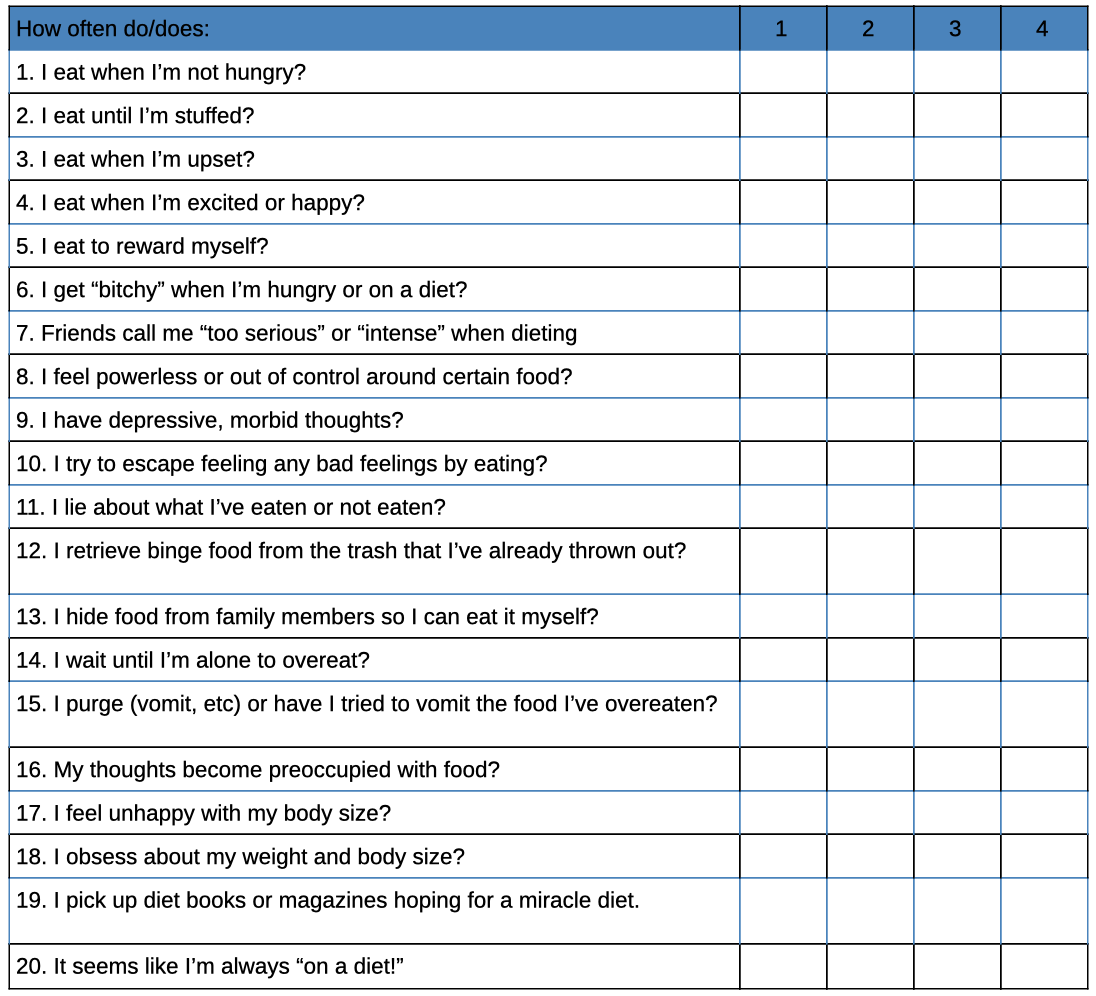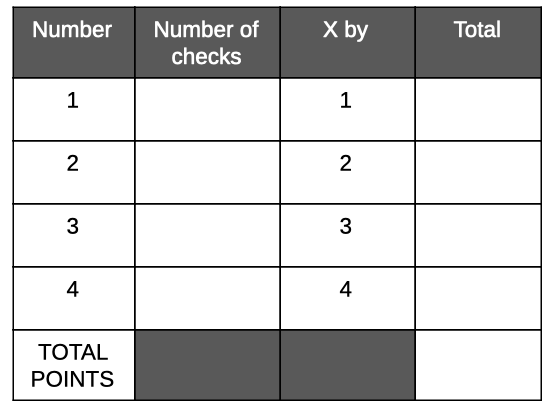For most of us, if we ate solely based on our bodies’ needs and actual hunger, we would be our ideal weight. However, we eat for many reasons, beyond hunger. Emotional eating is eating in a way to feed our emotions, not our physiological needs. During this stressful time where we are trapped at home, it’s almost inevitable that we will experience emotional eating at least once. It often leads us to eat too much, to eat unhealthy foods, and can lead to a very unhealthy relationship with food. Just because you sometimes eat emotionally, doesn’t mean you are an ‘emotional eater’.
Sometimes a quick reflection will give us the answer, other times it is not so simple.
Use the tools below to help identify what your body is trying to tell you so that you can make a food choice you won’t regret later!
1 = Never or almost never
2 = Sometimes, less than once per week
3 = Often, a few times per week
4 = Almost always or almost every day
WHAT KIND OF HUNGRY ARE YOU?20-40 Points: Emotional eating is not a big issue for you. You tend to eat according to hunger or habit.
41-60 Points: You sometimes or often eat emotionally. Try to be more mindful of how you feel when you’re eating, why you make certain choices, and how you could make better choices.
61-80 Points: You often or always eat emotionally. Complete the “Emotional Eating Inventory” and spend this week addressing your emotions and relationship with food.
Regardless of where you are on the scale above, practicing mindful eating can be beneficial to our emotional and physical health!
How to address emotional eating and mindfulness:
Step 1: Identify your triggers and raise awareness
- Keep track of your hunger, cravings, urges for food in your food diary for one week, noting emotions felt & situations prior to eating
- Once complete, look through your week and identify triggers, such as emotions, time of day, social influences, places, habits, and so on
Step 2: Find other ways to feed your feelings
- This step is essential to overcoming emotional eating and achieving your lifelong goals
-
Here are some suggestions:
- If you’re depressed or lonely, call someone who always makes you feel better, play with your dog or cat, or look at a favorite photo or cherished memento.
- If you’re anxious, expend your nervous energy by dancing to your favorite song, squeezing a stress ball, doing yoga or mediation, or taking a brisk walk.
- If you’re exhausted, treat yourself with a hot cup of tea, take a bath, light some scented candles, or wrap yourself in a warm blanket.
- If you’re bored, read a good book, watch a comedy show, explore the outdoors, or turn to an activity you enjoy (woodworking, playing the guitar, shooting hoops, scrapbooking, etc.).
- If you’re overwhelmed, journal all of the items that are making you feel overwhelmed and turn it into a task list. Delegate and cross off the items that don’t really matter.
Step 3: Pause when a craving hits (and it will)
- Be aware that you are feeling a craving, don’t push it off. You can overcome it.
- Think about something that makes you feel powerful and proud, like how well your last workout went.
- Follow this routine:
- Take 5. Instead of telling yourself “I can’t give into my craving,” tell yourself “I can have X if I wait 5 minutes.” During this time, try to remove yourself from the food you are craving (leave the kitchen) and check in with yourself. How are you feeling? What’s going on emotionally? Even if you end up eating, you’ll have a better understanding of why you did it. Try doing one of the activities mentioned above. This can help you set yourself up for a different response next time.
- Accept your feelings, good or bad.
- After 5 minutes, ask yourself “will eating X really help?” and “do I still feel like I need X?” If you can, have a healthy snack instead of X, if you can’t have X and repeat this again the next time you are having a craving.
Resources
Am I Hungry?: www.amihungry.com; Ellyn Satter Institute: www.ellynsatterinstitute.org; Intuitive Eating: www.intuitiveeating.org; The Center For Mindful Eating: www.tcme.org; Health At Every Size (HAES): www.lindabacon.org




